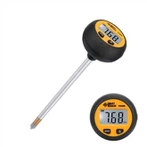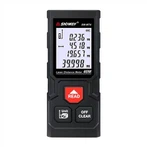Three Attentions When Soldering Iron Soldering
1. Welding method
Different soldering objects require different working temperatures of the soldering iron. When judging the temperature of the soldering iron tip, you can touch the electric soldering iron to the rosin. If the soldering iron makes a "squeak" sound when it touches the rosin, it means that the temperature is right; if there is no sound, but the rosin can barely melt, it means that the temperature is low. ; If the tip of the soldering iron emits a lot of smoke as soon as it touches the rosin, it means that the temperature is too high.
Generally speaking, there are three main steps in welding:
First melt a small amount of solder and rosin on the soldering iron tip, and align the soldering iron tip and solder wire at the solder joint at the same time.
Before the flux on the tip of the soldering iron has evaporated, touch the tip of the soldering iron and the solder wire to the solder joint at the same time to start melting the solder.
When the solder has infiltrated the entire solder joint, remove the soldering iron tip and solder wire at the same time or remove the tin wire first, and then leave the soldering iron tip and solder wire after the solder joint is full and beautiful.
The welding process is generally suitable for 2 to 3 seconds. When soldering integrated circuits, the amount of solder and flux should be strictly controlled. In order to avoid damage to the integrated circuit due to poor insulation of the electric soldering iron or the induced voltage of the internal heater to the shell, in practical applications, the method of unplugging the power plug of the electric soldering iron is often used to solder while it is hot.
2. Welding quality
When welding, it should be ensured that each solder joint is firmly welded and in good contact. The tin point should be bright, smooth and free of burrs, and the amount of tin should be moderate. The tin and the object to be welded are firmly fused, and there should be no false welding or false welding. False welding means that only a small amount of tin is welded at the solder joint, resulting in poor contact and intermittent connection. False welding means that it seems to be welded on the surface, but it is not actually welded. Sometimes the lead wire can be pulled out from the solder joint by pulling it out by hand.
3. Welding material
For materials that are not easy to weld, the method of plating first and then welding should be used. For example, for aluminum parts that are not easy to weld, the surface can be plated with a layer of copper or silver, and then welded. The specific method is to add some CuSO4 (copper sulfate) or AgNO3 (silver nitrate) to water to prepare a solution with a concentration of about 20%. Then place the cotton ball soaked with the above solution on the smooth aluminum parts polished with fine sandpaper, or directly immerse the aluminum parts in the solution. Due to the replacement reaction between copper ions or silver ions in the solution and aluminum, after about 20 minutes, a thin layer of metallic copper or silver will be deposited on the surface of the aluminum piece. Use a sponge to absorb the solution on the aluminum piece, and bake it under the lamp until the surface is completely dry. After the above work is completed, apply an alcohol solution with rosin on it, and then it can be directly welded.






